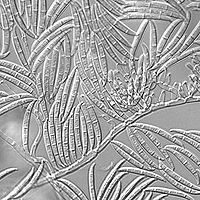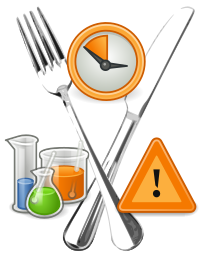
Comprehensive dietary and internal exposure assessment of deoxynivalenol contamination in a high-risk area in China using duplicate diet studies and urinary biomarkers
Sign Up to like & getrecommendations! Published in 2021 at "Food Control"
DOI: 10.1016/j.foodcont.2020.107830
Abstract: Abstract This study assessed the exposure of 199 Chinese population samples from the Anhui Province, China, to deoxynivalenol (DON) based on their dietary intake and urinary biomarkers. This is the first study to compare between… read more here.
Keywords: intake; deoxynivalenol; exposure; contamination ... See more keywords

Mycotoxin levels in the digestive tissues of immature gilts exposed to zearalenone and deoxynivalenol
Sign Up to like & getrecommendations! Published in 2018 at "Toxicon"
DOI: 10.1016/j.toxicon.2018.08.002
Abstract: ABSTRACT Most plant materials are contaminated with small doses of Fusarium mycotoxins and its modified forms that exert subclinical toxic effects on humans and animals. The aim of this study was to evaluate the carry‐over… read more here.
Keywords: tissue saturation; zearalenone deoxynivalenol; mycotoxin levels; deoxynivalenol ... See more keywords

Acute exposure to deoxynivalenol inhibits porcine enteroid activity via suppression of the Wnt/β-catenin pathway.
Sign Up to like & getrecommendations! Published in 2019 at "Toxicology letters"
DOI: 10.1016/j.toxlet.2019.01.008
Abstract: The intake of food containing deoxynivalenol frequently causes damage to the intestine, the renewal of which is driven by intestinal stem cells (ISCs). Nevertheless, the toxicity of deoxynivalenol on ISCs and its underlying mechanisms remain… read more here.
Keywords: deoxynivalenol; exposure; catenin pathway; activity ... See more keywords

Comparison of Data from a Single-Analyte and a Multianalyte Method for Determination of Urinary Total Deoxynivalenol in Human Samples.
Sign Up to like & getrecommendations! Published in 2017 at "Journal of agricultural and food chemistry"
DOI: 10.1021/acs.jafc.6b04755
Abstract: Deoxynivalenol (DON) exposure is estimated by the combined measures of urinary DON and DON-glucuronides. In this study, data from single-mycotoxin (SM) and a multimycotoxin (MM) methods were compared for 256 Swedish adult urine samples. Both… read more here.
Keywords: data single; single analyte; analyte multianalyte; deoxynivalenol ... See more keywords

Remarkable Uptake of Deoxynivalenol in Stable Metal-Organic Frameworks.
Sign Up to like & getrecommendations! Published in 2021 at "ACS applied materials & interfaces"
DOI: 10.1021/acsami.1c19501
Abstract: Deoxynivalenol (DON), which is known as one of the most harmful mycotoxins, has contaminated food and feed and attracted concerns worldwide. However, the effective adsorptive removal of DON to ensure food safety still is a… read more here.
Keywords: uptake deoxynivalenol; deoxynivalenol; remarkable uptake; metal organic ... See more keywords

The enzymatic epimerization of deoxynivalenol by Devosia mutans proceeds through the formation of 3-keto-DON intermediate
Sign Up to like & getrecommendations! Published in 2017 at "Scientific Reports"
DOI: 10.1038/s41598-017-07319-0
Abstract: The enzymatic detoxification of deoxynivalenol (DON) is a promising mitigation strategy for addressing this mycotoxin contamination of cereal grains. A recently described bacterium, Devosia mutans 17-2-E-8, capable of transforming DON into its non-toxic stereoisomer 3-epi-DON,… read more here.
Keywords: devosia mutans; keto intermediate; deoxynivalenol; epimerization ... See more keywords

Environmental Conditions after Fusarium Head Blight Visual Symptom Development affect Contamination of Wheat Grain with Deoxynivalenol and Deoxynivalenol-3-Glucoside.
Sign Up to like & getrecommendations! Published in 2022 at "Phytopathology"
DOI: 10.1094/phyto-06-22-0199-r
Abstract: Fusarium head blight (FHB) of wheat, caused by the fungus Fusarium graminearum, is associated with grain contamination with mycotoxins such as deoxynivalenol (DON). Although FHB is often positively correlated with DON, this relationship may break… read more here.
Keywords: deoxynivalenol; contamination; head blight; fusarium head ... See more keywords

The enzymatic detoxification of the mycotoxin deoxynivalenol: identification of DepA from the DON epimerization pathway
Sign Up to like & getrecommendations! Published in 2018 at "Microbial Biotechnology"
DOI: 10.1111/1751-7915.12874
Abstract: The biological detoxification of mycotoxins, including deoxynivalenol (DON), represents a very promising approach to address the challenging problem of cereal grain contamination. The recent discovery of Devosia mutans 17‐2‐E‐8 (Devosia spp. 17‐2‐E‐8), a bacterial isolate… read more here.
Keywords: deoxynivalenol; epimerization; identification; enzymatic detoxification ... See more keywords

The plant response induced in wheat ears by a combined attack of Sitobion avenae aphids and Fusarium graminearum boosts fungal infection and deoxynivalenol production.
Sign Up to like & getrecommendations! Published in 2017 at "Molecular plant pathology"
DOI: 10.1111/mpp.12386
Abstract: The pathogen Fusarium graminearum, producer of the mycotoxin deoxynivalenol, and Sitobion avenae aphids both reside on wheat ears. We explored the influence of an earlier aphid infestation on the expression profile of specific molecular markers associated… read more here.
Keywords: plant; wheat; graminearum; infection ... See more keywords

Evaluation of treatment methods for spiking deoxynivalenol (DON) in single corn kernels
Sign Up to like & getrecommendations! Published in 2023 at "Canadian Journal of Plant Science"
DOI: 10.1139/cjps-2022-0259
Abstract: Current research on deoxynivalenol (DON), a trichothecene secondary metabolite produced by the Fusarium species in corn grains, relies on the time-consuming field inoculation of Fusarium species with unpredictable and low recovery rates of DON in… read more here.
Keywords: deoxynivalenol; recovery rates; corn; treatment methods ... See more keywords

Fullerene C60 Protects Against Intestinal Injury from Deoxynivalenol Toxicity by Improving Antioxidant Capacity
Sign Up to like & getrecommendations! Published in 2021 at "Life"
DOI: 10.3390/life11060491
Abstract: Oxidative stress is involved in a wide variety of pathologies, and fullerene has been shown to have an antioxidant ability. Mycotoxins exert toxic effects through induction of excessive reactive oxygen species (ROS). Here, we evaluated… read more here.
Keywords: antioxidant capacity; fullerene; deoxynivalenol; fullerene c60 ... See more keywords